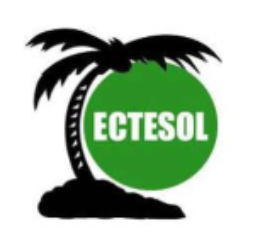by Laureen Fregeau
Mexican education is structured similarly to the US with the exception that pre-primary is mandatory and free. Pre-primary, primary (1-6), lower secondary (7-9) and upper secondary (10-12) school (ages 3-17) is mandatory, however, completion rates differ significantly by geographic region, urban vs. rural, indigenous vs non-indigenous, social class and by gender. Mexico City (mostly non-indigenous) has a completion close to 12th grade while Chiapas (a rural, mostly indigenous state) has completed about 8th grade.
Education is centralized under the federal government ministry of education (SEP). Primary curriculum is standardized for both public and private schools by SEP and includes Spanish, mathematics, natural sciences, history, geography, art, and physical education. Students take a standardized end-of-year exam to advance to the next grade. Despite “standardization” schools serving the upper classes offer a far more extensive curriculum and smaller teacher-pupil ratios. At the K-12 Thomas Jefferson Institute, students learn three languages (English, Spanish and Mandarin) and have advanced science and other content area opportunities in collaboration with prestigious international universities (such as Harvard). Indigenous children may receive a more practical (agriculture or service-oriented) education that prepares them for service employment or agricultural jobs. Lower secondary education has two tracks, academic and technical. Those in the technical track do not go on to upper secondary. Upper secondary is generally for university preparation with two tracks: Academic University-Preparatory and Professional Technical Education. Public upper secondary schools are affiliated with public universities. The Academic track provides students with a general academic curriculum for the first two years followed by specialized study in the final year. Foreign Language is compulsory. Students who complete upper secondary ear a Bachillerato certificate. Vocational education at Professional Technical Institutions follows the completion of lower secondary school for students who want technical careers. Graduate earn a Bachillerato Tecnico certificate.
Tertiary education is similar to the US with 4-, 5- and 6-year programs leading to Licenciatura, Maestria, Especialista and Doctorado degrees. Degree titles
are culturally important and used as titles with one’s name (e.g. Lic. Juan Diaz).
54% percentage of Mexican children from low-income families achieving a bottom quartile PISA score in reading which well below the OECD average of 29% complete upper secondary in Mexico City while only 40% do so in Chiapas). Mexican adults who have not achieved upper secondary education earn half or below half of median earnings for the country. Only 38% of students in Mexico are enrolled in upper secondary or vocational upper secondary school. The percent differs significantly by geographic region (e.g. 64 % in Mexico City vs 29 % in Chiapas.
The Mexican education system faces a number of challenges especially in inequitable access and unequal quality of education for lower social classes. Other challenges include the lack of technology integration into lower-income schools, inadequate funding that leads to poor infrastructure, underfunded teacher education, lack of classroom materials and lack of professional development for teachers and the lack of quality enhancement programs.
Teachers are trained at normal schools. In the field, a newly graduated teacher in a rural school serving low-income students may have 30-40 students in a primary grade with little technology or support. She may be at a bilingual school but not be bilingual. Her students’ language abilities in their indigenous language and Spanish vary from fluent to less than 30 words. In an urban school serving higher-income students the teacher has 21 students, decades of experience, a student teacher with excellent preparation and high-level technology.
It is important to keep in mind that your Mexican EL students’ educational experiences before immigration can vary widely. Checking what setting they come from can help inform your accommodations for individual students.
Sources
Hamann, Sánchez García and Amparo López. (2019).Teacher Education in México: Higher Expectations, Significant Change, but Still Finite Capacity. Oxford Research Encyclopedia of Education
Lantinotc (2024) A Comprehensive Guide to Mexican Education
Monroy (2019). Education in Mexico, WENR
OECD (2024). Education at a Glance 2021: OECD Indicators for Mexico
SCOLARO. (2024). Education System in Mexico
SEP. (2024). Ministry of Education of MexicoStatistica (2021). Mexico: Literacy rate from 2008 to 2020, total and by gender.
